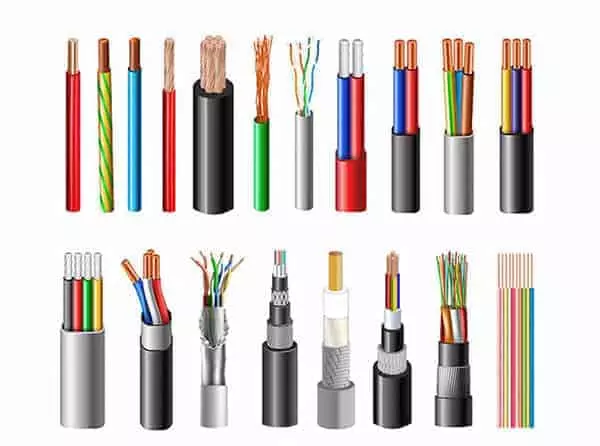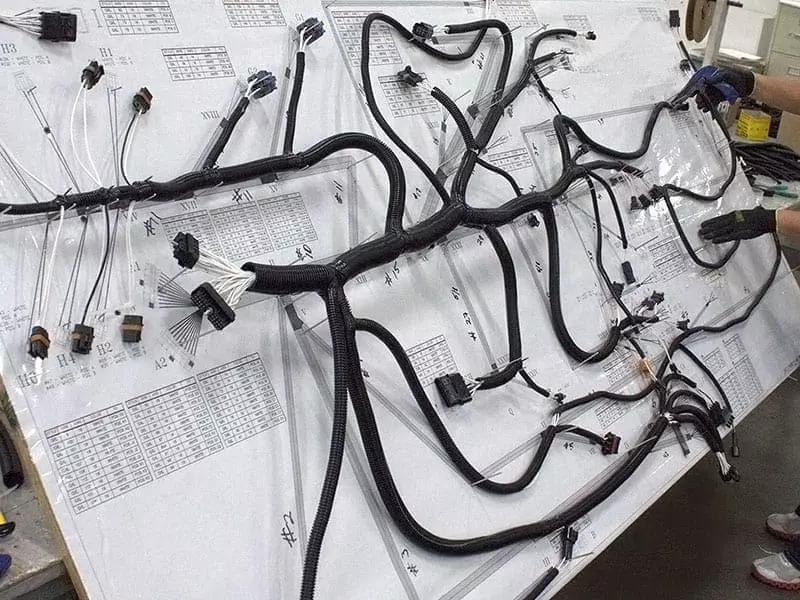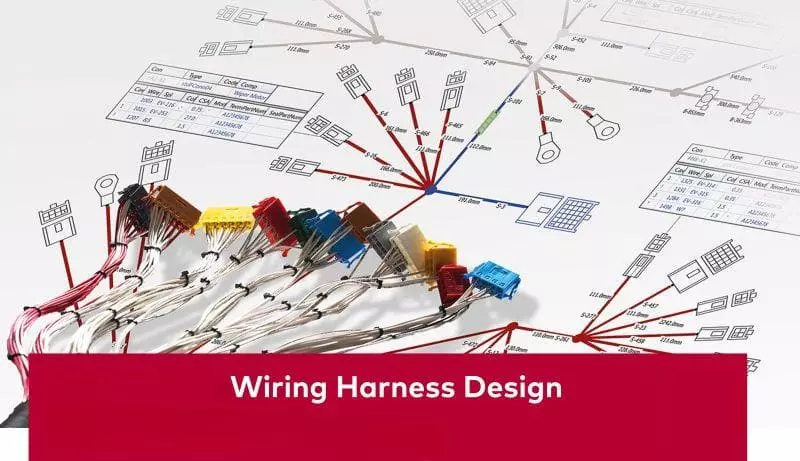Where Are Flat Cable Assemblies Permitted to be Installed?
Home » Where Are Flat Cable Assemblies Permitted to be Installed?
In electronic design and wiring projects, engineers frequently encounter a critical question: Where are flat cable assemblies permitted to be installed? That is, under what circumstances can flat cable assemblies be installed and used? Due to their lightweight, flexible, and space-saving characteristics, Flat Cable Assemblies are widely used in consumer electronics, automotive electronics, industrial automation, and medical equipment.
However, different application scenarios require adherence to corresponding industry standards (such as UL, IEC, NEC). Failure to comply may introduce safety hazards and compliance risks. Therefore, correctly understanding the permissible installation locations and restrictions for flat cable assemblies is crucial for ensuring system reliability and long-term operation.
What are Flat Cable Assemblies?
Flat Cable Assemblies are flexible cable components consisting of multiple parallel conductors enclosed in an insulating layer and equipped with corresponding connectors. Typically presented in a ribbon structure, they enable high-density signal or power transmission within confined spaces, serving as a common internal interconnection method in modern electronic devices.
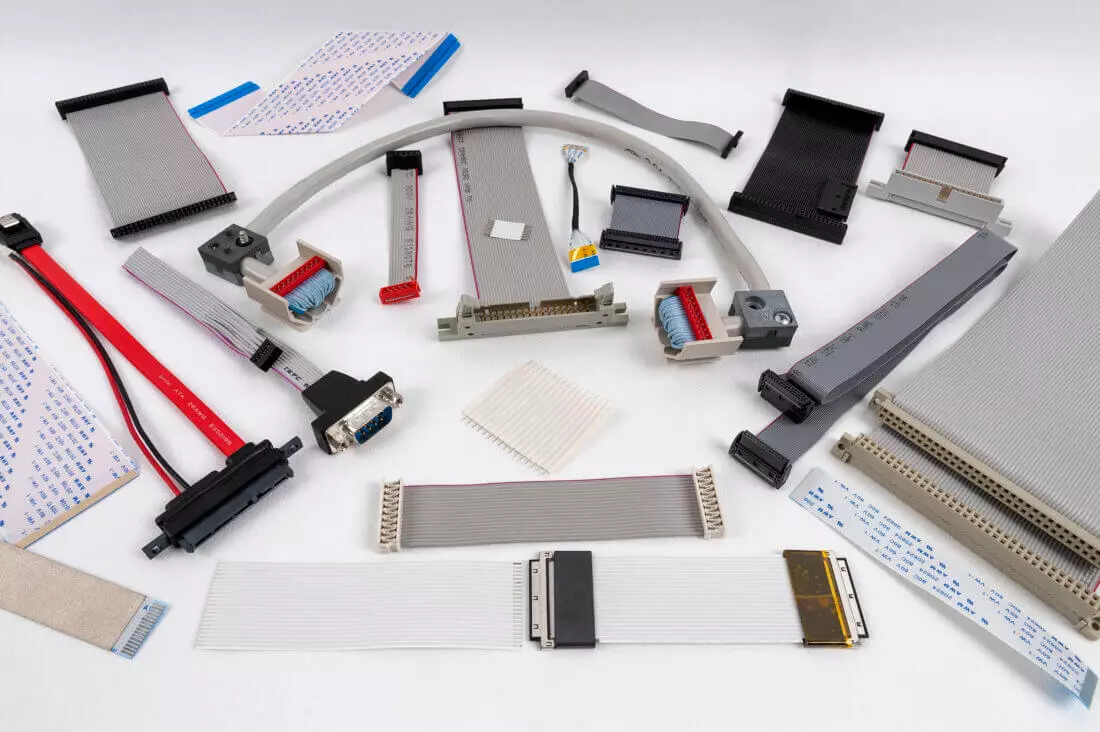
Key Features:
- Lightweight and Slim: Compact size and low weight facilitate lightweight equipment design.
- High Flexibility: Supports repeated bending, suitable for dynamic applications or confined spaces.
- Space-Saving: Neatly arranged conductors occupy significantly less space than traditional wire harnesses.
- Easy Wiring: Modular design enables quick installation and high assembly efficiency.
Differences from Traditional Round Harnesses
Flat Cable Assemblies utilize a parallel conductor layout, offering compact routing and a small bending radius, making them ideal for short-distance connections within equipment. Traditional round harnesses primarily feature bundled conductors, typically with an outer sheath and shielding, providing higher mechanical strength and better suitability for long-distance applications and harsh environments. Significant differences exist between the two in terms of space utilization, interference resistance, and applicable scenarios.
Relevant Standards and Specifications
International/Regional Standard References
The installation of Flat Cable Assemblies must not only meet design requirements but also comply with relevant international and regional standards:
- UL (Underwriters Laboratories): A widely used electrical safety certification in the United States, covering flame retardancy ratings, temperature rise performance, and voltage withstand testing.
- IEC (International Electrotechnical Commission): International electrical standards covering cable electrical performance, insulation requirements, and environmental adaptability.
- NEC (National Electrical Code): Defines usage restrictions for flat cables in building wiring and power distribution within the United States.
- IPC-2221: Universal printed circuit design standard specifying routing, spacing, and creepage distance requirements for FFC/FPC.
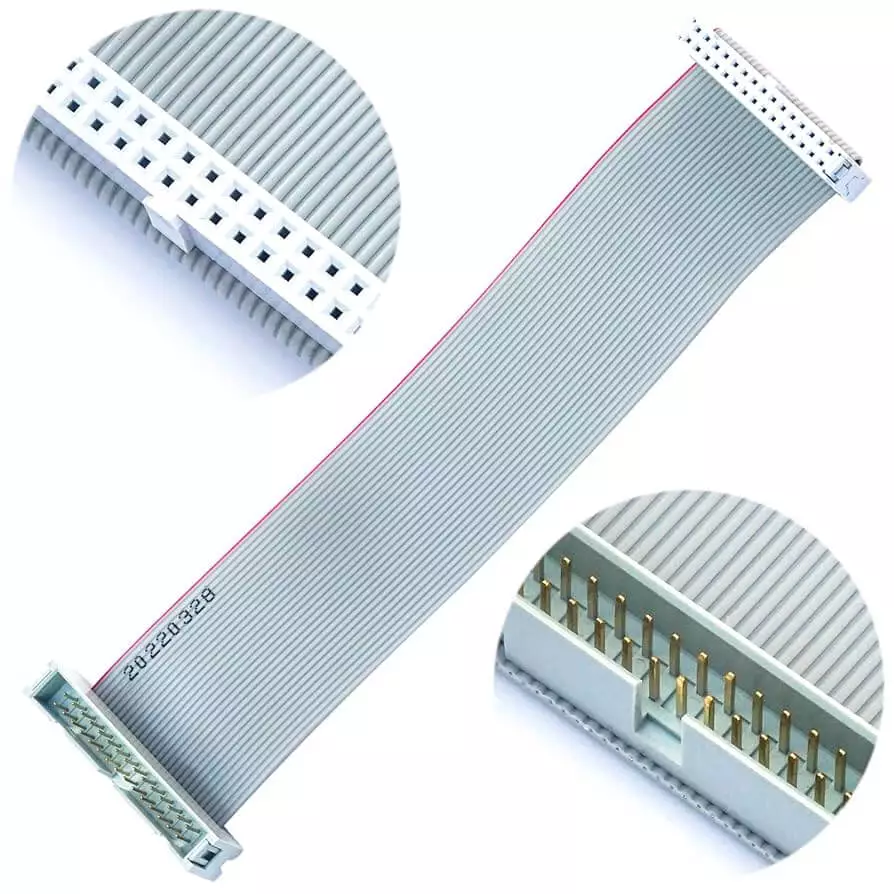
Industry Application Requirements
- Electronic Devices: Must meet flame retardancy (UL94V-0), bend resistance, and high-density wiring requirements to ensure device miniaturization and reliability.
- Automotive Sector: Adherence to automotive environmental standards such as ISO 16750, requiring cables to withstand high temperatures, vibration, and electromagnetic interference.
- Industrial Applications: Emphasis on mechanical strength, shielding effectiveness, and chemical corrosion resistance to guarantee long-term operational stability.
- Medical Devices: Must pass stringent biocompatibility and electrical safety certifications to prevent risks to patients and equipment.
Why Compliance with Standards is Mandatory?
Adherence to the aforementioned standards is not only a regulatory requirement but also critical for ensuring product safety and long-term reliability. Compliant flat cable assemblies guarantee:
- Electrical Safety: Prevention of short circuits, overheating, or fire hazards.
- Certification Compliance: Satisfaction of market access requirements (e.g., CE, UL, RoHS).
- Long-Term Reliability: Maintained stable performance in demanding environments, reducing maintenance and replacement costs.
Flat Cable Assemblies Typical Installation Locations
1. Inside Consumer Electronics
- Application Scenarios: Connecting laptop screens to motherboards, camera modules, printer scan heads, tablets, etc.
- Advantages: Flat Cable Assemblies feature a slim, lightweight structure enabling high-density wiring in confined spaces. They meet product miniaturization and weight reduction requirements while facilitating automated assembly.
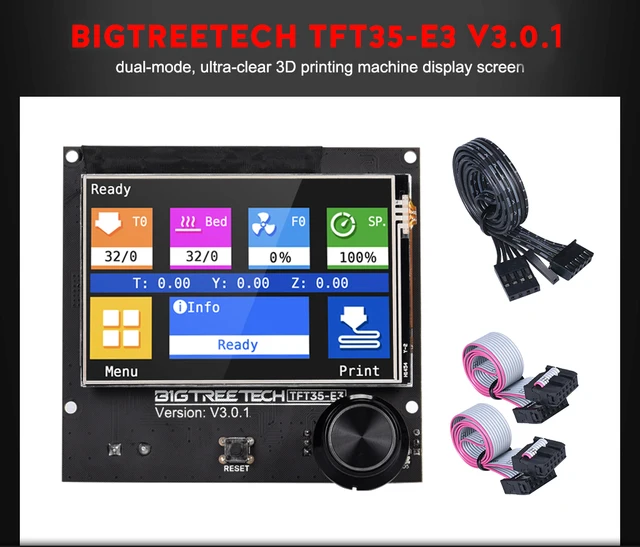
2. Automotive Electronic Systems
- Applications: Center console displays, infotainment systems, ADAS camera modules, headlight control modules.
- Advantages: Enables flexible routing in confined spaces and withstands repeated bending. Automotive-grade material selection ensures resistance to high temperatures, vibration, and EMI interference.
3. Industrial Automation and Control
- Applications: Industrial control cabinets, PLC modules, robotic joint connections, internal interconnects in inspection equipment.
- Advantages: Within control systems, Flat Cable Assemblies provide clean, compact wiring solutions that enhance assembly efficiency and conserve valuable cabinet space.
4. Medical Devices
- Applications: Portable monitors, diagnostic imaging equipment, laboratory instruments.
- Advantages: Excellent flexibility and lightweight design make them ideal for high-density connections in precision medical equipment, meeting stringent requirements for stability and electrical performance.
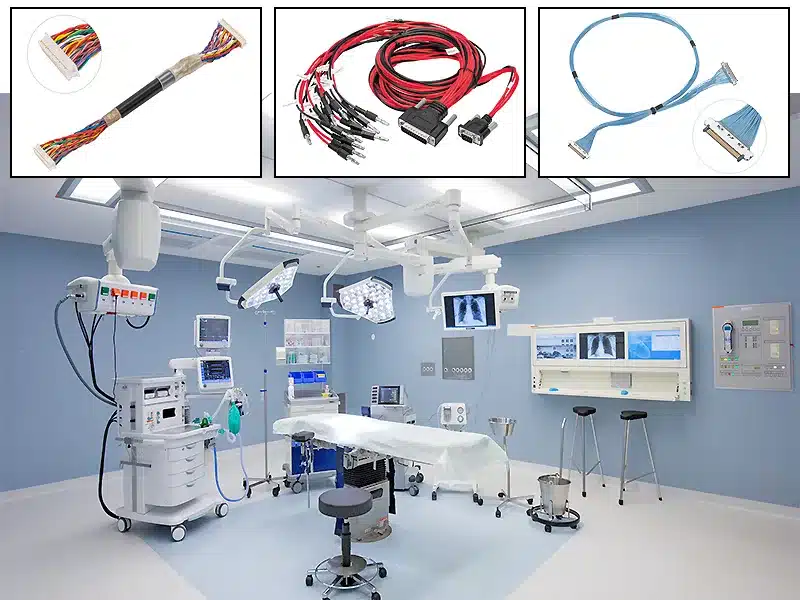
5. Communications and Data Equipment
- Applications: Internal server cabling, network switches, high-speed interconnections within data center chassis.
- Advantages: Flat Cable Assemblies enable short-distance high-speed signal transmission while maintaining signal integrity and reducing crosstalk, making them suitable for IT equipment demanding strict bandwidth and stability.
Limitations of Flat Cable Assemblies
Flat Cable Assemblies are primarily suited for internal device interconnections and are not recommended for outdoor, heavy-duty, high-power, or high-interference environments. When operating in challenging conditions, customized designs or alternative solutions must be selected to ensure safety and reliability.
1. Long-term outdoor exposure
- Risks: UV radiation, temperature/humidity fluctuations, and water ingress accelerate insulation degradation, compromising electrical performance.
- Note: Standard FFC/FPC lacks long-term UV resistance and waterproofing. For outdoor use, customized solutions with weather-resistant coatings or protective conduits must be selected.
2. Areas with High-Frequency Vibration or Severe Mechanical Impact
- Risk: The relatively fragile structure of flat cables may suffer metal fatigue, solder joint damage, or connector failure under prolonged high-vibration conditions.
- Note: In heavy-duty machinery or aerospace environments, shielded round wire harnesses or reinforced flat cables are typically preferred.
3. High-current / High-power transmission circuits
- Risk: Flat Cable Assemblies have limited conductor cross-sectional area, making them unsuitable for high-current applications. This can cause overheating and even insulation damage.
- Note: For power trunk lines or electrical distribution systems, thick-gauge round cables should be prioritized.
4. High EMI/RFI Interference Environments
- Risk: The exposed conductor surface area in flat structures is large, making them susceptible to electromagnetic interference that can cause signal distortion.
- Note: If use is unavoidable, employ shielded high-speed FFC/FPC to ensure signal integrity.
5. Applications Explicitly Prohibited by NEC/UL
- Risk: According to the National Electrical Code (NEC) and UL safety standards, Flat Cable Assemblies must not be used directly for building wiring or power distribution, as this poses significant safety hazards.
- Note: Such applications must use round cables compliant with power cable standards or dedicated power cords.
Flat Cable Assemblies vs Round Cable Assemblies
| Criteria | Flat Cable Assemblies | Round Cable Assemblies |
|---|---|---|
| Structure | Parallel conductors with flat ribbon-like profile | Conductors bundled together in a circular cross-section |
| Space Utilization | Excellent – thin, compact, saves space in tight enclosures | Moderate – requires more volume due to circular geometry |
| Flexibility | High – easy to bend, suitable for confined or dynamic routing | Moderate – flexible but less ideal for repeated sharp bending |
| Current Capacity | Limited – not suitable for high-power transmission | Higher – supports larger conductor cross-sections |
| EMI/RFI Performance | Lower – exposed conductor surface is more prone to interference | Higher – natural shielding effect, easier to add shielding |
| Durability | Moderate – vulnerable in vibration/impact conditions | High – stronger mechanical protection with outer jacket |
| Installation | Easy – simplified routing, often plug-and-play with connectors | Requires bundling, strain relief, and protective routing |
| Typical Applications | Consumer electronics, laptops, displays, medical devices, robotics | Automotive power systems, industrial machinery, outdoor cabling |
| Standards Restrictions | Restricted by NEC/UL for building wiring and high-power use | Widely accepted for power and signal distribution |
How to Properly Install Flat Cable Assemblies?
- Maintain a reasonable bend radius: Avoid sharp-angle folds and adhere to the principle of a bend radius ≥ 10 times the cable thickness.
- Prevent stretching and twisting: Use clamps or strain relief devices to prevent excessive stress on cables and connectors.
- Select appropriate connectors: Ensure pitch compatibility with interface types; commonly use ZIF/LIF connectors.
- Consider EMI/RFI shielding: Use shielded cables or add external shielding for high-speed signal applications.
- Allow safety clearance: Design creepage distance per IPC-2221 standards to prevent contact with high-voltage or sharp-edge components.
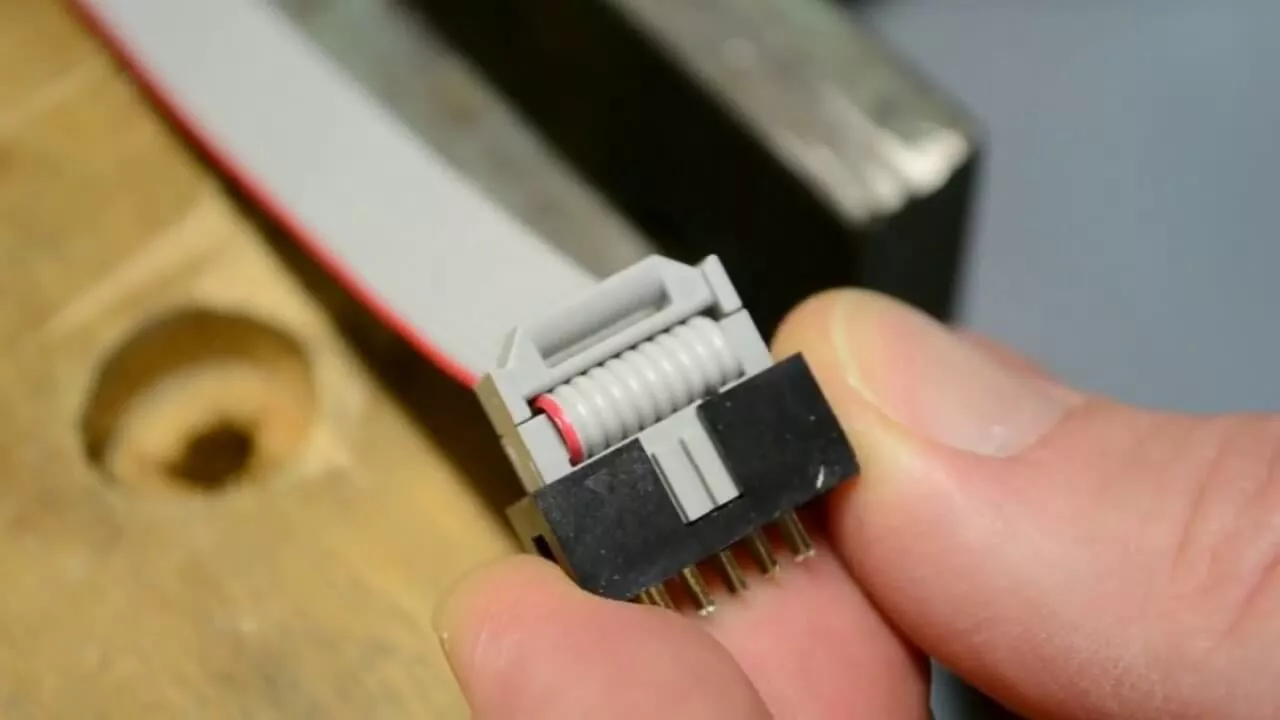
FAQs
Q1: Can Flat Cable Assemblies be used for power transmission?
A1: Generally not recommended. Flat cables have limited conductor cross-sectional area and are suitable for low-current signals or low-power transmission. For high-current applications, use round cables or dedicated power cords.
Q2: Can Flat Cable Assemblies be used in high EMI environments?
A2: Yes, but shielded high-speed FFC/FPC must be selected, or additional shielding measures added to ensure signal integrity.
Q3: How do I determine which cable is suitable for my application?
A3: Consider space constraints, current requirements, environmental conditions, and standard specifications comprehensively. If uncertain, contact Linkwings’ engineering team for professional selection support.
Conclusion
Flat Cable Assemblies are ideal for internal wiring in consumer electronics, automotive electronics, industrial control, and medical devices, but their use is restricted in building wiring, high-current transmission, and harsh outdoor environments. Engineers must strictly adhere to standards such as UL, IEC, and NEC during installation to ensure safety and long-term reliability.
As a professional supplier, Linkwings offers both standard and customized Flat Cable Assemblies, helping customers achieve the optimal balance between performance and compliance.
If you are considering where flat cable assemblies are permitted to be installed, please contact the Linkwings engineering team for expert support.
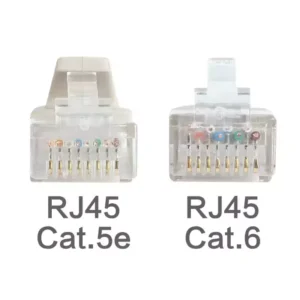
What is the Difference Between Cat5e and Cat6 RJ45 Connectors?
Table of Contents Wh
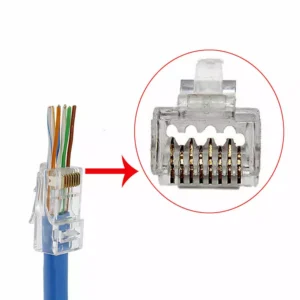
What is RJ45 Connector?
Table of Contents In
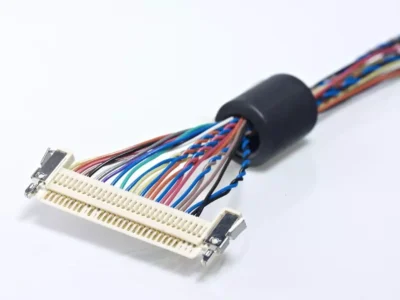
Top 10 LVDS Cable Manufacturers in World 2026
Table of Contents In

How to Check Lvds Cable?
Table of Contents In

